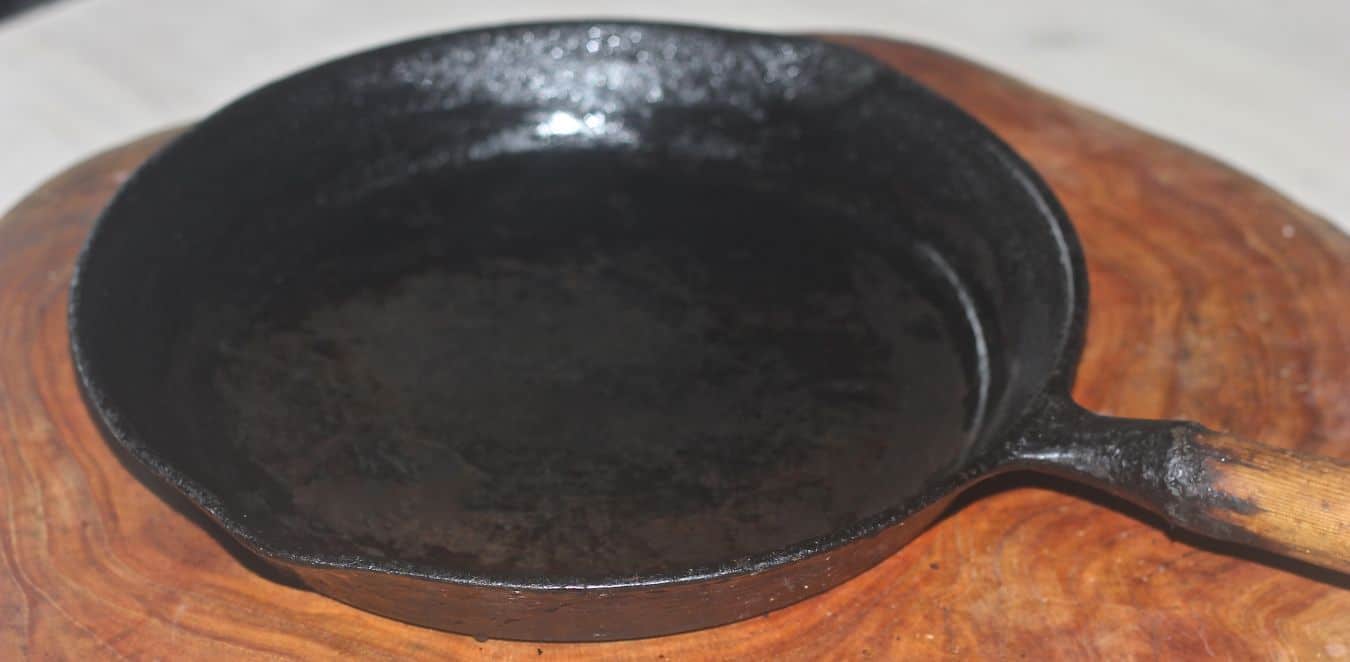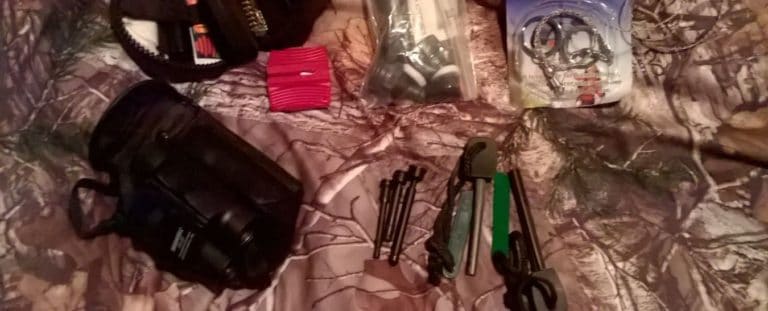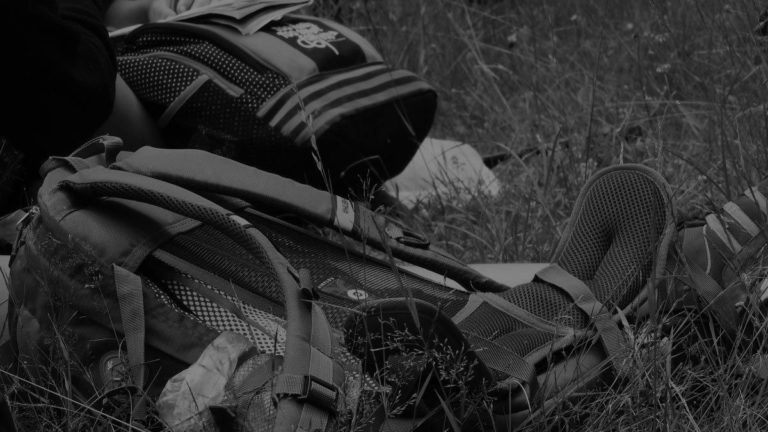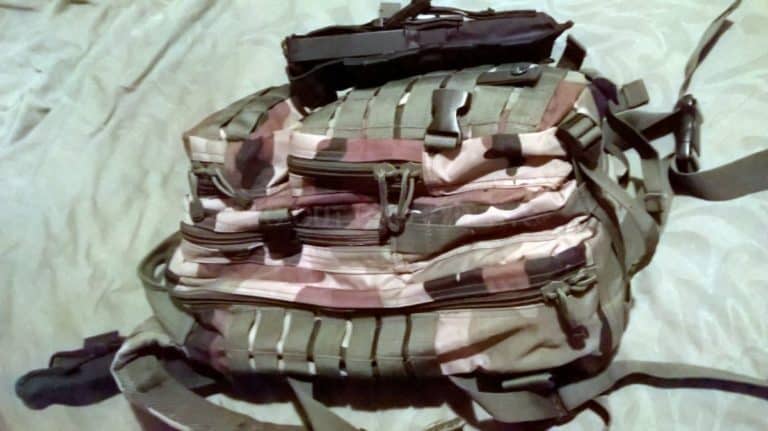14 Items NOT to include in a BOB
When SHTF, if you haven’t already strategically located to a remote area that is fortified and well-stocked with supplies, then at some point you will need to bug out from your current home. Nearly all the experts will agree that bugging out is the more dangerous choice in most cases. Even if you are ultra-prepared and have a pre-determined location in mind, there are still any number of things that can go wrong during a bug out. But still, it’s foolish not to have a bug out plan.
A bug out trip is intended to be a short trip from point A or your current unstable location to point B, a pre-determined safer location. For this, you will need a bug out bag (BOB) to carry the gear and supplies you will rely on to sustain you and your family until you get to a safer location.
There are all kinds of lists out there which will tell you what items to include in your bug out bag. But not many people take the time to remind you about the items NOT to include in a BOB. A bug out trip is totally different from a Wilderness trip, where you intend to live for an undetermined amount of time in the woods. If you’re bugging out, your goal is to get from point A to point B as fast as you can with no delay and as few obstacles as possible.
It’s a good idea to have planned stop points or rendezvous points along the way during your bug out trip, so that you are moving from unsafe to safer, to safest. This means you need to plan your bug out and your primary route as well as several alternate routes. If you absolutely must have additional supplies or gear on hand for peace of mind, then cache them at your rendezvous or stopping points.
- Glass jars
This may seem like a no-brainer, right? Yet, you’d be surprised at the number of folks who have done intensive planning for a bug-in situation who also plan to put their home canned (glass jars) food into a bug out bag or cardboard box in the vehicle thinking they can just transport it. You may make it without breaking too many jars, but glass jars full of food are also extremely heavy if you end up on foot at any point during your journey. The same is true for medication or condiments in glass bottles or jars. Transfer these items to plastic to avoid getting stuck without if the glass breaks.
- Perishable food
Even though your bug out trip is intended to be a short trip, it doesn’t mean that you can rely on perishable food to sustain you. Although it may seem like a good idea to include fresh fruit like a banana or orange, these just won’t hold up in extreme temperatures. A bug out bag on your back is going to be subjected to extreme temperatures, hot or cold, depending on the climate. Even food stored in a vehicle for several hours or overnight can begin to spoil, and instead of sustaining your life, it can put your life at risk.
Stick to food that you are certain will withstand any extreme temperature fluctuations. Things like granola bars (avoid chocolate), pemmican, beef jerky, trail mix, or mixed nuts, etc. are your best bet for the bug out bag. If your bug out location is more than several hours away on foot, you may want to include chicken or beef bouillon just in case you are stranded overnight.
- Processed or packaged food with no nutritional value
One mistake that many people make is to believe that because their bug out trip is only supposed to take several hours to a day, they don’t have to worry much about food. But a BOB loaded with junk food that has no nutritional value, like pop tarts, candy, chips, etc. is a disaster waiting to happen. Food is fuel for your body.
During a bug out trip, your body will likely be pushed to its limit as you walk for hours. Even if you are lucky enough to bug out in a vehicle, your body will be under extreme mental and emotional stress. All of this takes a toll on your body. And if fatigue sets in on your trip, you will be delayed or even stopped in your tracks while you recover.
Your body requires specific nutrients to keep it moving during your trip, especially foods high in protein. You won’t starve on a bug out trip without the right foods, but a lack of nutrition can certainly affect how well you move and think. An average adult needs 2400-3,500 calories daily. With the physical and mental exertion required during a bug out trip, you may as well double that amount. Make sure you take nutritional value into account when packing food for your bug out.
- Cans of Food
A lot of people include cans of vegetables, tuna, and other canned meat as part of their food stockpile when they are preparing for a SHTF event. These are great if you are bugging in because all you need is a can opener and maybe some heat from a campfire and you’ve got a great meal. In a pinch, you could even eat them cold if you had to. The problem with putting cans of food in your bug out bag, of course, is the weight. Your bug out bag will be heavy enough will all the other items you need to carry without adding the weight of canned goods.
- Battery or Oil-operated Lanterns
Again, the issue with batter powered or oil fueled lanterns is the weight. These lanterns are heavy, and you’ll need extra batteries or oil which will take up valuable space in your BOB. Choose a hand crank or solar powered flashlight or lantern instead. These are more reliable and lightweight with no need to carry replacement batteries or oil.
- Heavy Tools
It makes sense on a bug out trip that you will need tools, especially things like screwdrivers, a hammer, shovel, etc. But the problem with carrying all of these tools on your bug out is that they will weigh you down unnecessarily. Choose your bug out bag tools wisely. Find a good multi-tool and perhaps an ax or hatchet that will double as a hammer if needed. Stock your full -sized tools at your BOL so you can make repairs and rebuild once you get there.
- Cast Iron Pans
Cast iron is superb for cooking over an open fire so it may seem like a no-brainer to take it along to use for cooking during a bug out trip. But as anyone who uses cast iron knows, it’s also VERY heavy. Stockpile your cast iron pots, pans, and Dutch oven at your bug out location in advance. For cooking over an open fire on your bug trip choose stainless steel instead which is much lighter.
- Silverware or Plastic ware
Having utensils to eat with while you’re on your bug out trip is definitely a good idea. But carrying silverware means extra weight. Bringing disposable plastic ware along is a lighter weight option, however, consider the fact that you will have that added waste to dispose of after every meal. The best thing to do is bring one metal spork along for each family member and simply rinse or wipe it off after each meal to re-use for the next one.
- Bulky Sleeping Bags
Staying warm if you find yourself needing to spend one or several nights on the road will be critical. But carrying a big bulky sleeping bag with each person’s BOB on the off chance you may need it is really unnecessary. Pack a lightweight bivy bag or Mylar emergency blankets instead both of which will be lighter and work nearly as well. Instead of a full-fledged tent, carry a military poncho or plastic tarp and cordage or a bivy tent. In the event, your bug out trip is interrupted or halted, and you need shelter you should be fine with the lighter weight options for a night or even two if needed.
- More than two bottles of water
If you’ve been preparing for a SHTF event for any length of time, then you know that fresh drinking water is one of the most critical resources you need to plan for in an emergency. It might seem natural to pack as much water as you would need for several days. So, advising you to pack LESS water in your bug out bag almost seems counterintuitive, doesn’t it? But it’s true. Bottled water is heavy.
So, you want to carry one or two bottles of water in your bug out bag that you can have to drink if you need it or if you don’t have time to stop at a stream or lake to get a drink. But you need to include your LifeStraw or another water filter also.
Plan on getting most of your drinking water from the environment around you rather than struggling with the weight of all the water you need. When you come to a stream, river, lake, or pond, use your water filter to quench your thirst. Save the water you are carrying for those times when you aren’t near a water source.
- Untested Gear or Gadgets
When people first begin to awaken to the idea of prepping, it’s easy to get overwhelmed and excited about all the gear and gadgets that are available. Most new preppers spend the first year and sometimes longer just buying up all the cool gear and gadgets that the “experts” recommend someone carry in their BOB or include in their everyday carry (EDC) or I’m never coming home (INCH) bags.
There’s no shame in it. Every prepper has gone through that newbie stage. Most of us have at one time, or another had a backpack full of gear we bought because it was the newest greatest must-have item. You know you’ve progressed beyond the newbie prepper stage when you realize that you need to test out and practice using your gear and gadgets in advance. Would you want to risk your life and the safety or lives of your family on gear or gadgets that you haven’t tested yourself? A bug out trip is certainly not the time to figure out how to properly use a LifeStraw or how to start a fire for the first time without a lighter. Make sure everything in your bug out bag has been personally tested by you and that you know how to use it.
- Poor quality or “cheap” gear
This one goes hand in hand with the untested gear or gadgets. Those who are new to prepping often let enthusiasm or fear run wild and they blow their budget initially. About halfway through the first year, they may discover that more expensive doesn’t always mean the best quality. This discovery often sends them to the other extreme, and they decide that they better buy cheaper gear and save their money for other things, like paying off debt or saving up for a better bug out vehicle.
So, when you’re buying your survival gear and gadgets, be conservative with your wallet but don’t just go for the cheapest option automatically. Consider the quality of the item you’re buying, read lots of reviews from actual users, and then choose the item that best fits your budget. Buying a cheap or low-quality bug out bag might make sense initially, but when you’re in the middle of your bug out trip and the zipper on the main compartment breaks, you’ll be kicking yourself.
- Pajamas
Even if you are used to sleeping in pajamas every night, it’s not a good idea to put these into a BOB. The first reason for this is that you shouldn’t be stopping long enough to sleep an entire night on a bug out trip. Stops during a bug out should be limited to only when necessary and should be as short as possible in duration. Secondly, changing into pajamas and going to sleep on a bug out trip puts you at a distinct disadvantage if your camp is invaded or something else happens that requires a quick exit. The last thing you want to do is be running through the woods in pajamas and realize all your EDC items are in your cargo pants still at the camp.
- Books
Most preppers rightly determine that when SHTF, the Internet and all its vast resources will be one of the first things to go down. The obvious answer to this is to hoard printed materials such as reference books and store them in your BOB. After all, you might need those step by step instructions on how to splint a broken arm or what herbal remedy is the best cure for diarrhea. It’s a also good idea to have visual references when foraging for edible plants so you can at least make sure you don’t eat a poisonous one.
But packing books, even ones like the SAS survival guide or first aid references, just doesn’t make good sense. Books are heavy and easily damaged by rain or other weather conditions. A better idea would be to save your reference material to your cell phone and then use the extra space in your BOB to carry a full charged spare battery and a hand or solar powered charger for your phone. The towers will be down but anything downloaded to your actual phone should still be accessible as long as you can charge it.
There it is, our suggestion for the 14 items NOT to include in a BOB. Are any of these not so hot gadgets or gear in your BOB right now? Have you bought an item only to discover later that it wasn’t the quality or didn’t have the “cool” factor that you thought it would? Did we miss any items that you’ve recently taken out of your BOB as you moved out of the newbie prepper phase? Share it with us in the comments below.





